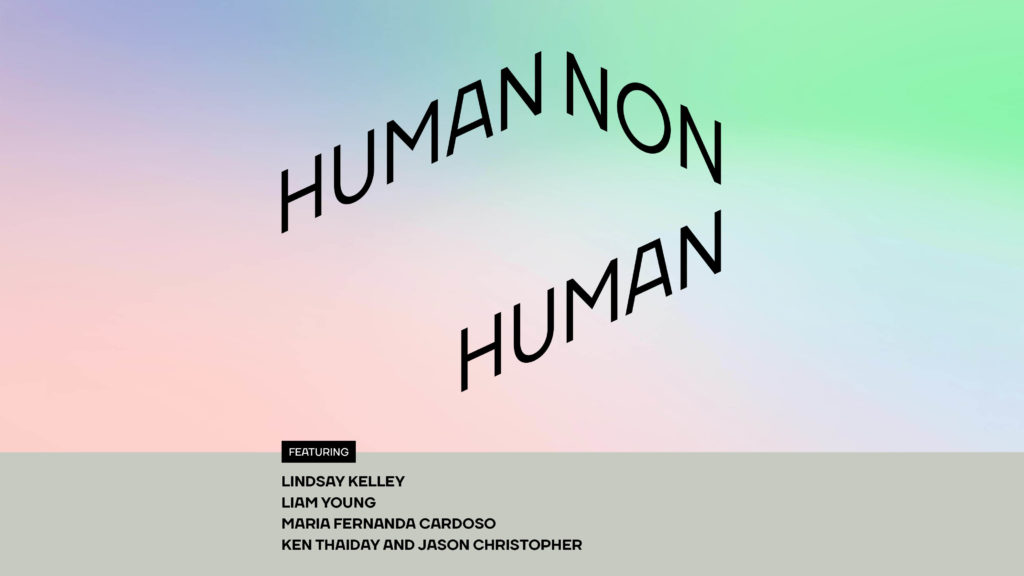
From popular culture to mainstream media to discourse on the post-, trans– and non– human, the human impact of current technological change is palpable. The exhibition Human non Human responds to this sense of anxiousness and exhilaration. It is an outcome of an international research project titled Curating Third Space: The Value of Art-Science Collaborations, which focuses on the intersection where art and science meet the public. It is curated by myself and Dr Lizzie Muller from UNSW Art&Design with support from MAAS Assistant Curator, Nina Earl. For us, exhibitions and museums can provide extremely fertile ‘third spaces’, that break out of an art / science binary and offer physical and social spaces where many different kinds of knowledge exist together such as creative practice, specialist knowledge, objects and artefacts, and personal and collective knowledge of lived experience.
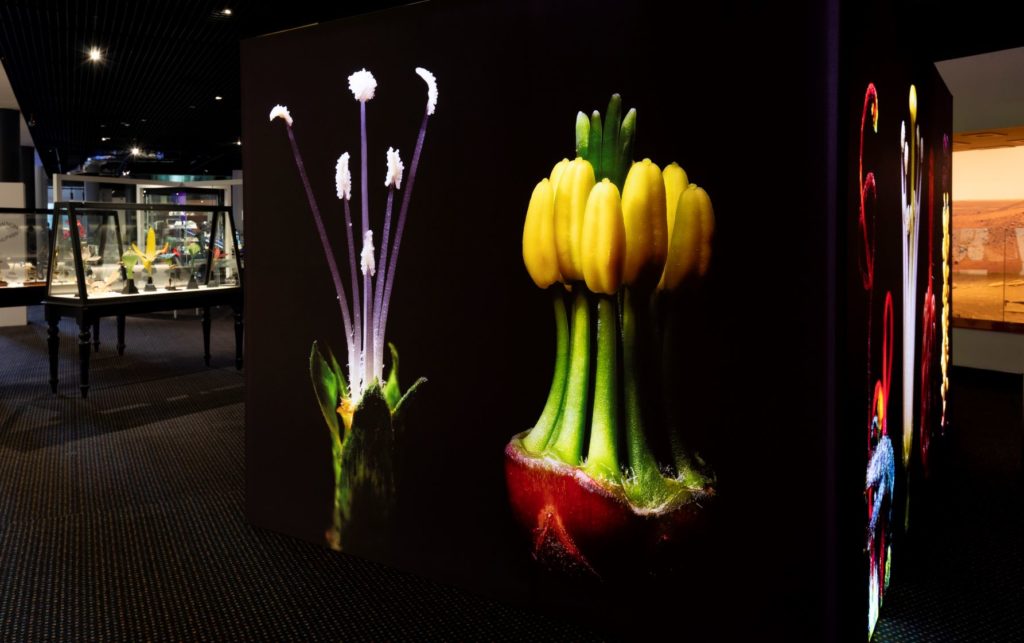
These areas of enquiry and audience responses were central to the development of Human non Human which features four immersive installations enriched by art and science to ask What makes us human and How might humans adapt in the future? Artists Maria Fernanda Cardoso, Dr Lindsay Kelley, Ken Thaiday and Jason Christopher, and Liam Young, were invited to make new work and incorporate objects from the MAAS collection to explore the way human experience is enmeshed with non-human actors or agents, from plants and animals to particles, data flows, buildings and robots. Addressing four fundamental aspects of human experience – FOOD, WORK, SEX and BELIEF– Human non Human responds to the impact of accelerating technology, connectivity and a rapidly changing environment.
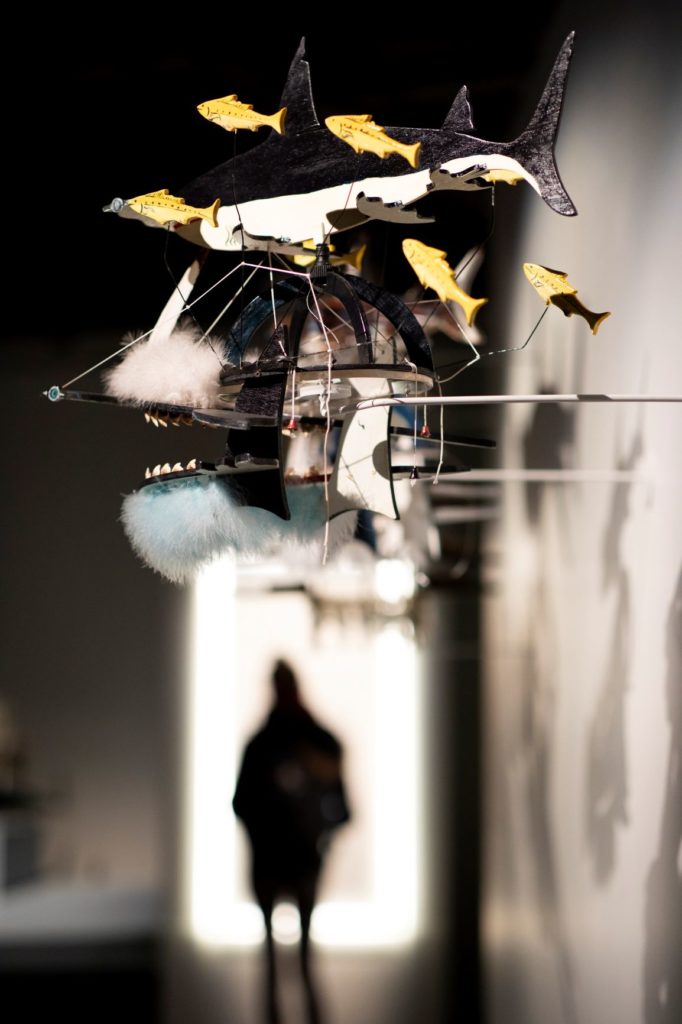
Our research led us to a number of curatorial questions that seemed central to current art-science programming. Many of these questions were generated by the data gathered through the Visual Matrix workshops we conducted with audiences over the past few years. Some of these questions were:
How can people adapt to a post-human future? What is the role of the artist in this future?
How can we make exhibitions that create potential for non-human centred thinking?
Science and technology are not neutral forces, how can we reflect this in the way we curate?
How can we create an exhibition that shares visual culture and multiple fields of knowledge in formats that entangle ideas and materiality in art, technology and science?
How can Indigenous knowledge and other non-Western knowledge systems create and shape understanding of possible futures?
How might historical collections support research and contemporary creative practice to produce new cultural material and new knowledge?
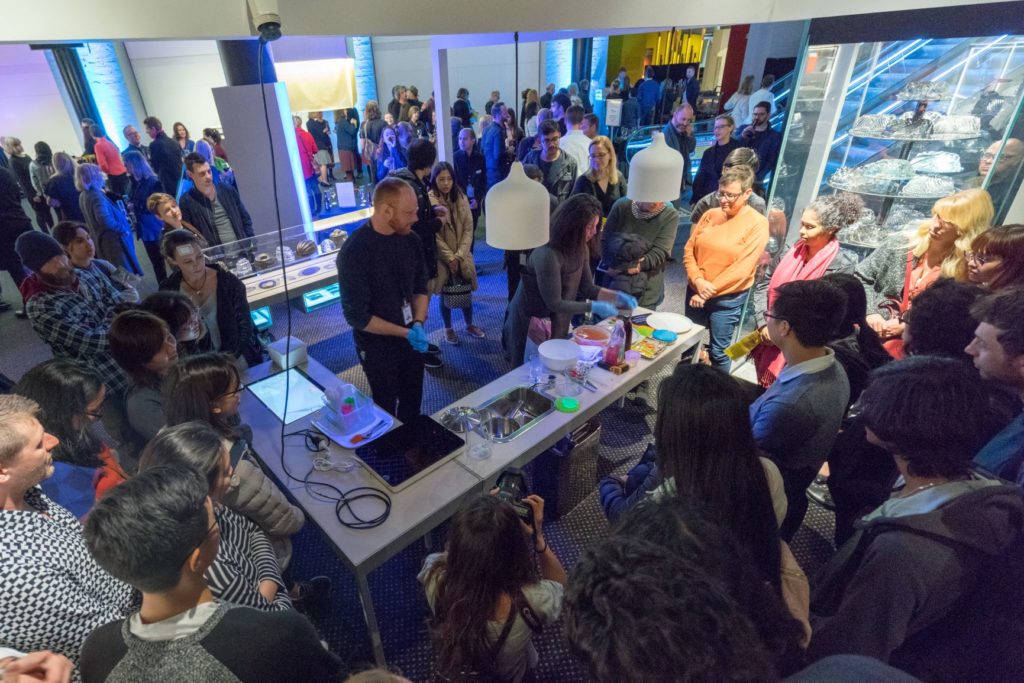
There is a pronounced interest from museums and galleries in new formats that combine modes of exhibiting and modes of action that re-imagine the separation of fields of enquiry. In relation to this, Human non Human explicitly explored the relationship between commissioning new work, the integration of the Museum’s historical material and the capacity for the gallery space to support performance and inter-activity. A range of objects were integrated into the installations, from a recent Torres Strait Island Beizam Headdress, to Soviet era space food to nineteen century botanical and insect models. Food-based performances by Lindsay Kelley took place as did a performance lecture by Liam Young and botanical workshops with Maria Fernanda Cardoso, each grounded in their ongoing research-based practices and relating to aspects of the Museum’s collection.
Museums are grappling with how to contextualise shared objects of knowledge and how to be relevant in the representation of knowledge. MAAS has a vast and varied collection traversing technologies, design, sciences, the visual and decorative arts, textiles and fashion and many other areas of human endeavour. The collection is central to this project for Lizzie and I, as it gives us capacity to communicate with audiences across knowledge-systems – from a historical and from a contemporary perspective. It locates the ideas within the Museum context, adding specificity as well as speculation in relation to the audience experience.
We need to ask how we can activate or re-active the reservoirs of knowledge these collections hold. The MAAS collection is not encyclopaedic but it is expansive and copious. It can speak to quantum physics, botany and biology as well as colonial legacies, digital technologies, faith and ritual. The questions we asked and wanted to share with the public were how to bring these various practices, objects and research into dialogue. Separations of art and science and technology exists in institutions, but not so much in the data streams of today.
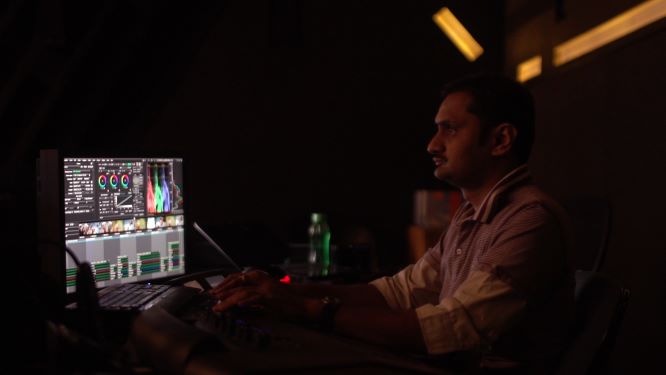
Written by Katie Dyer, Senior Curator, Contemporary
November 2018